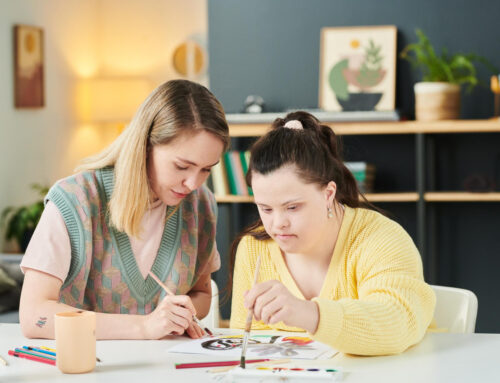
Anyone who has been a parent of toddlers has inevitably experienced this situation, the one where after several months of persistence your child finally has come to terms with the fact that getting and staying dressed in clothes is a normal practice. This includes all head-to-toe apparel from the tiny hair-bands to the Velcro shoes. As a parent, you might feel more accomplishment because your child can dress themselves and in under 20 minutes.
In reality, not all parents and their children comfortably reach this milestone. In fact, some children come within reach but due to underlying factors retreat backwards. This results in challenges that may seem “adorable” at first, but gradually morph wreak havoc on social obligations. Examples may include:
- Constantly running late to scheduled appointments or school because your child refuses to dress or has ripped off their outfit numerous times in the morning
- Being called to your child’s school because he/she strips down in the middle of class
- Managing full-fledged meltdowns every time you tell or help your child get dressed
- Telling your child he/she can’t wear pajamas to school or church, which results in them barricading themselves in the house.
- Trying to persuade your child to wear jeans instead of sweatpants but they adamantly refuse to make the switch.
- Dealing with a tantrum every time you ask your child to take off an outfit they’ve worn every day for the last 3 weeks so that you can finally wash it.
- Not being able to convince your child to wear shoes and socks for outdoor activities
- Taking off your child’s shirt for every little drop of food or water that lands on the fabric
- Handling overly complicated shopping trips to get new clothes for your child
Depending on how long their child fights it, parents can be at a loss for what to do next or if they should do anything at all. Should I wait it out? Will my child grow out of it? Kids go through this all the time, like a phase, right? In some cases, these thoughts are fully justified because some kids do grow out of it and move on. Refusing to dress in clothes becomes a problem when it strongly impacts the child’s life, functionality, and social participation.
An occupational therapist can become a key player in a child’s life when it comes to dressing tasks because he or she might be able see things that parents aren’t able to catch on their own. Through assessment and clinical observation, the therapist might be able to help brainstorm with the parents the causal factors as to why dressing in clothes is so difficult for their child:
- Sensory-related factors: A child may have a serious dislike for certain clothes based on how the fabric and seams feel or how loose or tight the material sits on their body.
- Behavior-related factors: Some children can be very strict about what types of clothing they will wear while it has nothing to do with the actual fabric. Instead, clothing preferences are based on thought or logical processes that parents are unable to readily see. Examples include perseverating on favorite outfits (i.e., wearing a Super-Man suit 24/7), having specific color preferences, time of day, etc.
- Lack of exposure to variety: Factors might be unrelated to the child’s behavior and preferences. Parents might, without intention, might clothe their child in a limited type of clothing due to reduced time, fatigue, or financial constraints. So, when the time comes for the child to try different types of clothing (dresses, suits, swimsuits, costumes, etc.) for different occasions they can’t comfortably make the transition.
- Lack of or too much clothing expectations: Everyone parents differently, thus creating different rules or expectations about how a child is supposed to go about their day. Some parents may have no schedules or rules about dressing while other parents have too many rules, both resulting in the child not living up to a certain clothing standard.
Occupational therapists are trained to visualize the entire picture when it comes to participating in daily living tasks such as dressing, including parental, environmental, and child factors. Together with parents or guardians, the therapist can identify and breakdown the barriers to daily dressing for a child and then create a resolution (sensory diet development, behavioral modification, environmental adaptations, schedule creation and management, parent/guardian education, etc.) to meet the family’s goals.





